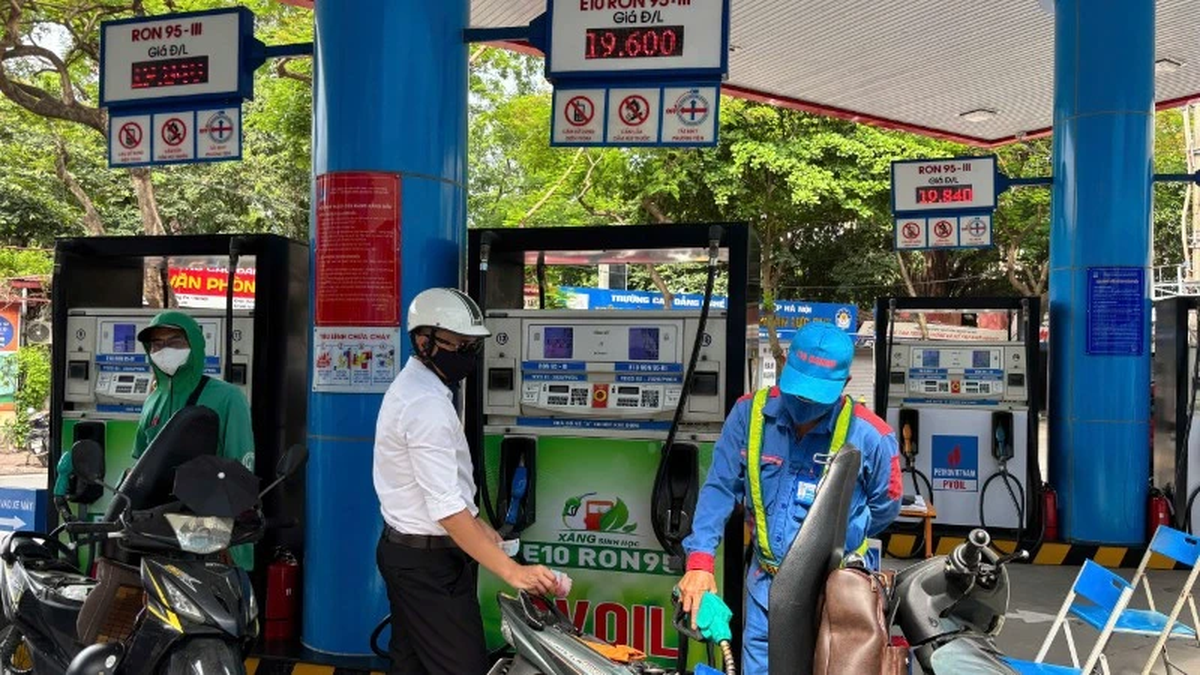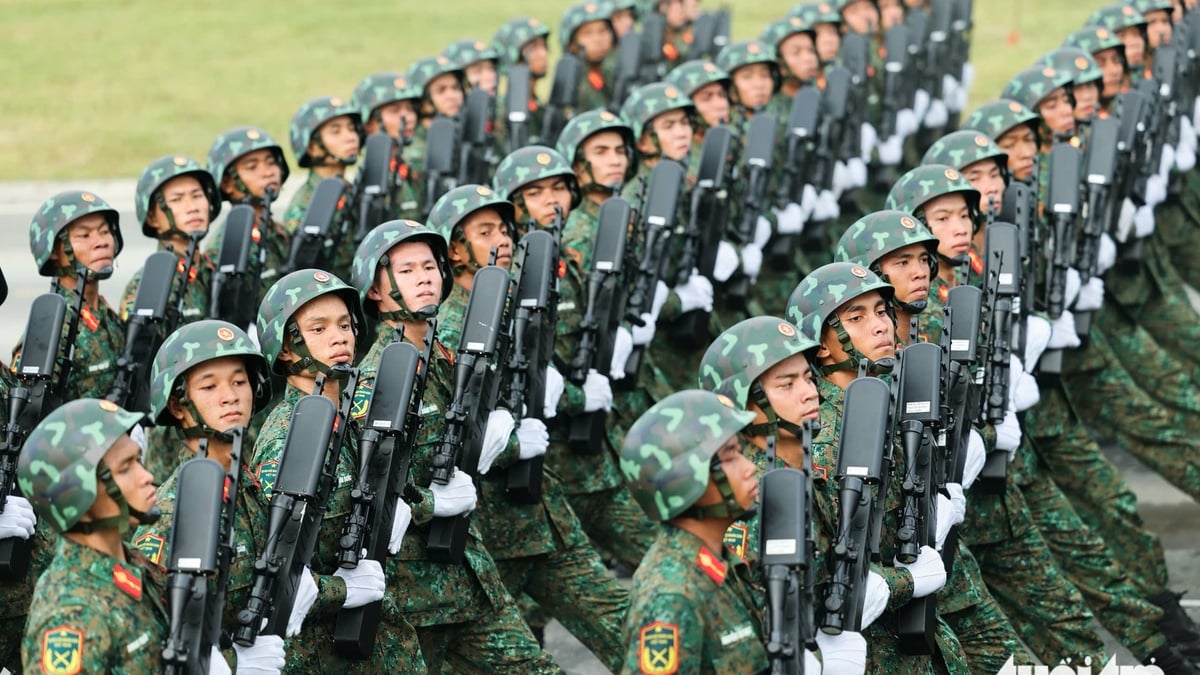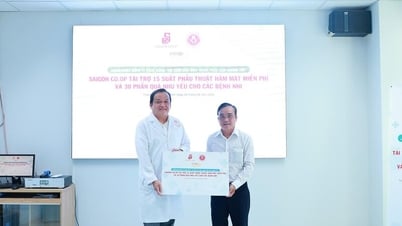Currently, some universities have been developing plans to convert equivalent scores according to the requirements of the Ministry of Education and Training . However, there are still many concerns surrounding this regulation.
Regarding the plan to convert equivalent scores between admission methods to a common scale, the Ministry of Education and Training requires universities to use high school graduation exam score data or high school transcript data as the basis for developing the 2025 admission score conversion rules to ensure the selection of candidates who best meet the input requirements of the training program, major, and group of majors.
Based on statistical data, analyze the learning results of students who have been admitted according to the combinations of previous years such as statistics on the number of candidates admitted according to each admission method for at least 2 consecutive years; learning results of students at the school. Based on the above plan, and at the same time based on the standard rules announced by the Ministry of Education and Training after the results of the 2025 high school graduation exam, schools will base on the characteristics of the training program, major, and group of majors to complete the school's conversion rules.
Currently, some universities that organize their own exams such as Hanoi University of Science and Technology and Hanoi University of Education are also planning to convert the scores of the competency assessment test and the thinking assessment test with the scores of the high school graduation exam method. Accordingly, the conversion formula is built by Hanoi University of Education on a chart, candidates can enter the competency assessment test score to receive the converted results to the high school exam score. For example, 6 points of the competency assessment test will be equivalent to 7.25 points of the high school graduation exam; 7 points of the competency assessment test will be equivalent to 8 points of the high school graduation exam; 8 points of the competency assessment test will be equivalent to 8.67 points of the high school graduation exam.
According to the proposed plan of Hanoi University of Science and Technology, the input according to the talent assessment method and the thinking assessment test score will be converted to the equivalent score of the high school graduation exam score method according to the formula: "y = ax + b". For example, y is the equivalent conversion score from the assessment score of the thinking assessment test result, x is the assessment score according to the high school exam score; a, b are the conversion coefficients. Candidates with a score in a range will be able to look up the coefficients a, b for calculation.
Sharing with CAND Newspaper reporters, Dr. Le Viet Khuyen, Vice President of the Association of Vietnamese Universities and Colleges, said that the Ministry of Education and Training's requirement for schools to standardize admission methods to a common scale is theoretically aimed at unification and ease of management. Bringing admission methods to a common scale can create a sense of fairness and ease for universities and management agencies when comparing admission results between candidates from different methods; reducing the "chaos" in admission in the context that schools are applying too many admission methods without an effective monitoring mechanism. However, this regulation will cause difficulties for schools in implementation, and is even unrealistic.
According to the analysis of Dr. Le Viet Khuyen, the conversion of test scores of different tests to a common scale can only be done when conditions are ensured such as the tests must be equivalent in nature, assess the same abilities of candidates, and the score distribution must be close to the normal distribution. Meanwhile, the high school graduation exam and separate tests such as capacity assessment and thinking assessment organized by universities have different natures; different knowledge requirements and different score distributions. Therefore, the equivalent conversion in this case lacks scientific and practical basis and does not bring much value.
Mr. Khuyen also said that the current problem is that the admission criteria based on high school graduation exam scores are decreasing, schools are focusing on separate exams which are costly and stressful for candidates or increasing the admission quota based on transcripts in the direction of "sweeping" candidates. Therefore, the appropriate long-term solution is that the Ministry of Education and Training should continue to improve the high school graduation exam so that schools can use it as the main basis for admission, then special schools with high input quality requirements can add additional criteria to select candidates suitable for the training profession.
Dr. Hoang Ngoc Vinh, former Director of the Department of Vocational Education, Ministry of Education and Training, said that many countries with advanced education systems do not implement score conversion as Vietnam is planning to apply. Mr. Vinh said that instead of imposing score conversion, we need to learn from the methods of advanced education systems. That is, to give autonomy to schools, so that candidates can choose the appropriate method and the Ministry of Education and Training will switch to a supervisory role, promoting universities to be autonomous, creative and accountable. Candidates need to choose the method that suits their strengths and schools must publicly disclose all admission data, from benchmark scores to admission rates and student quality.
The Ministry of Education and Training needs to severely punish schools that cheat on their enrollment quotas or set unscientific rates, and provide technical support by building a national data system for schools to refer to enrollment trends. This solution is not only in line with the Law on Higher Education but also takes advantage of modern technology. Admission software can handle a variety of methods without converting scores.
Source: https://cand.com.vn/giao-duc/ban-khoan-quy-doi-diem-tuong-duong-giua-cac-phuong-thuc-xet-tuyen-i763912/
























![[Photo] Nghe An: Provincial Road 543D seriously eroded due to floods](https://vphoto.vietnam.vn/thumb/1200x675/vietnam/resource/IMAGE/2025/8/5/5759d3837c26428799f6d929fa274493)
![[Photo] Discover the "wonder" under the sea of Gia Lai](https://vphoto.vietnam.vn/thumb/1200x675/vietnam/resource/IMAGE/2025/8/6/befd4a58bb1245419e86ebe353525f97)





































































Comment (0)